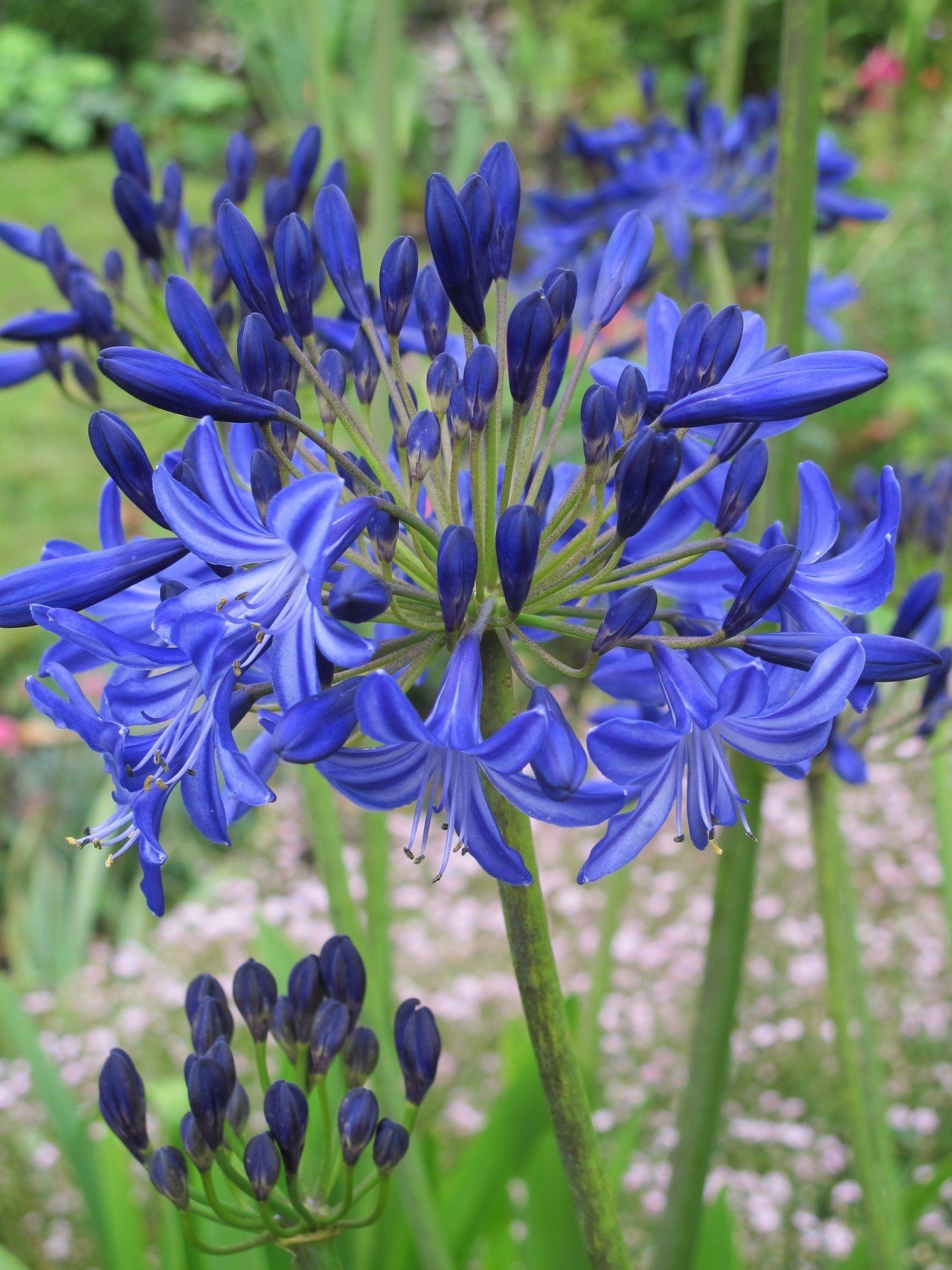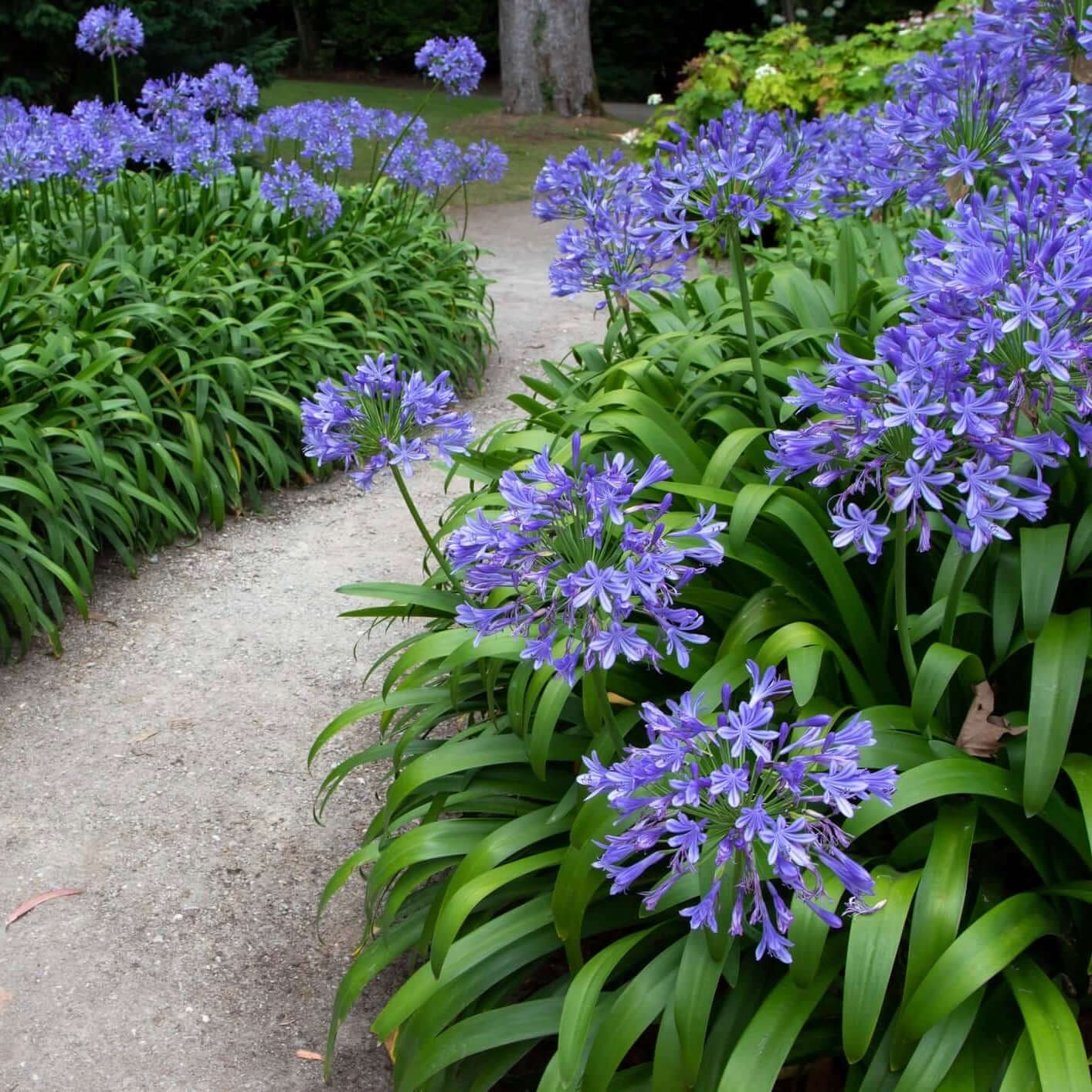Agapanthus Expanding Problems: Dirt, Sunlight, and Watering
Agapanthus Expanding Problems: Dirt, Sunlight, and Watering
Blog Article
Grasping the Art of Agapanthus Treatment: Important Actions for Healthy And Balanced Development and Lively Flowers
In the realm of cultivation, the growing of agapanthus stands as a fulfilling undertaking for those who seek to nurture these classy blooming plants. With their striking blossoms and stylish foliage, agapanthus has caught the focus of gardeners worldwide. However, accomplishing ideal growth and vibrant blooms requires a nuanced method that encompasses various crucial steps. From picking the right variety to grasping trimming strategies, the trip in the direction of growing flourishing agapanthus plants is complex and holds the essential to opening the complete potential of these agricultural treasures.

Choosing the Right Agapanthus Variety

When selecting the ideal Agapanthus variety for your garden, consider variables such as climate suitability, bloom color, and development routine. Agapanthus, typically called Lily of the Nile or African lily, is available in a variety of shades ranging from tones of blue and purple to white. Pick a bloom color that complements your existing garden scheme to develop a harmonious landscape. Additionally, consider the climate in your region to make certain the Agapanthus selection you pick can thrive in your specific conditions. Some ranges are extra forgiving of cool temperatures, while others choose warmer climates. Recognizing the growth behavior of different Agapanthus ranges is important for proper positioning within your yard. Some selections have a clumping development practice, suitable for borders or containers, while others have an even more spreading nature, ideal for ground cover or mass plantings. By meticulously examining these variables, you can select the best Agapanthus variety to improve the charm of your yard.
Ideal Planting Problems
Considering the optimum ecological demands is necessary for successful Agapanthus cultivation. Agapanthus plants are delicate to cool temperature levels and ought to be protected from frost throughout winter months.
To make sure healthy development and dynamic blooms, plant Agapanthus light bulbs at a depth of about 2-4 inches and area them 8-12 inches apart. Mulching around the base of the plants aids retain moisture and subdues weed development.
Watering and Fertilizing Tips
Maintaining appropriate wetness degrees and offering important nutrients are crucial elements in the treatment routine for Agapanthus plants. When it pertains to watering Agapanthus, it is crucial to strike an equilibrium. If overwatered, these plants favor regularly wet dirt however are vulnerable to root rot. During the expanding period, water deeply when a week, making certain the soil is well-draining to stop waterlogging. In hotter climates or during durations of dry spell, even more constant watering may be essential to keep the soil equally damp. Nevertheless, minimize watering in the winter months to stop water logged conditions.
Feeding Agapanthus is vital for promoting healthy and balanced growth and respected flowers. Apply a well balanced fertilizer, such as a 10-10-10 formula, in the very early spring as new development arises. By complying with these watering and feeding ideas, you can ensure your Agapanthus plants flourish and generate vivid, view lasting blossoms.
Trimming Techniques for Agapanthus
Pruning Agapanthus plants at the proper times and with appropriate strategies is essential for preserving their wellness and advertising optimal growth and blooming. The optimal time to prune Agapanthus is in late winter season or early springtime before new development arises. Begin by removing any dead or yellowing fallen leaves near the base of the plant. Cut them as close to the ground as feasible without damaging the arising shoots.
For flowered stems, wait till the blooms have perished and after that cut them back to the base. This not just cleans up the plant's look yet additionally encourages the advancement of new blossom buds. Deadheading invested blossoms can also reroute the plant's energy right into creating more flowers instead of establishing seeds. Nonetheless, if you wish to collect seeds for proliferation, leave some blossoms to dry and mature on the plant.
Keep in mind to make use of tidy, sharp devices to make accurate cuts and minimize the risk of presenting illness. Agapanthus. Normal trimming will assist maintain your Agapanthus looking healthy and cool while dig this guaranteeing a bountiful display of lovely blossoms
Dealing With Typical Bugs and Illness
After guaranteeing correct pruning strategies for Agapanthus, it is necessary to attend to usual insects and conditions that can impact the wellness and vitality of these plants. One typical pest that impacts Agapanthus is the Agapanthus gall midge.
Additionally, Agapanthus plants can endure from root rot if they are planted in improperly draining dirt. By being attentive and taking timely action against illness and parasites, you can help your Agapanthus plants thrive and generate lively blossoms. Agapanthus.

Conclusion
Finally, grasping the art of agapanthus care entails picking the ideal range, giving ideal growing conditions, appropriate watering and feeding, suitable pruning strategies, and attending to typical insects and conditions. By complying with these crucial steps, you can guarantee healthy growth and lively blooms for your agapanthus plants. Keep in mind to consistently check and maintain your plants to advertise their general health and long life.
To guarantee healthy growth Resources and dynamic flowers, plant Agapanthus light bulbs at a depth of regarding 2-4 inches and room them 8-12 inches apart. By following these watering and fertilizing ideas, you can guarantee your Agapanthus plants grow and produce vibrant, resilient blossoms.
One typical insect that impacts Agapanthus is the Agapanthus gall midge. In addition, Agapanthus plants can experience from root rot if they are planted in inadequately draining soil. By adhering to these important actions, you can make sure healthy and balanced development and dynamic flowers for your agapanthus plants.
Report this page